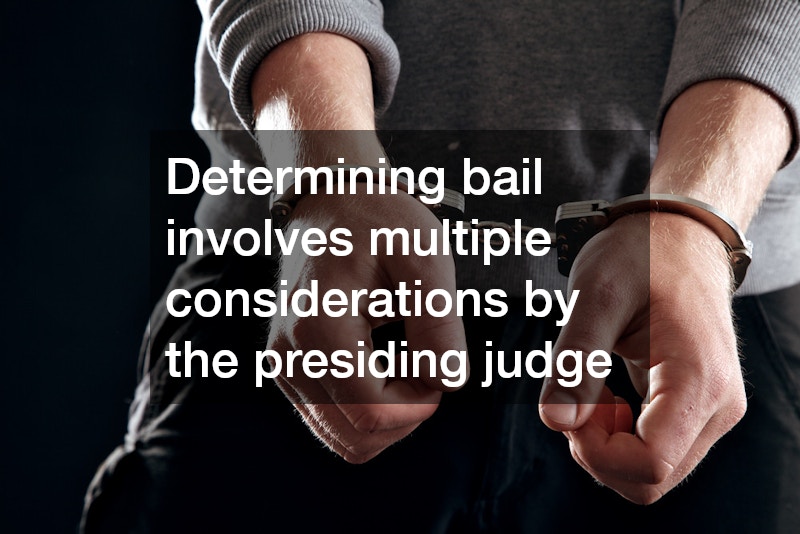The process of deciding bail amounts is a crucial aspect of the judicial system. Understanding how bail is set involves comprehending various legal and societal factors. This article delves into the nuances of bail decisions, exploring the elements that influence bail amounts and the role of bail bonds within this context.
Understanding the Purpose of Bail
Bail serves as a financial assurance that a defendant will return for their court appearances. It is not a form of punishment or a predictor of guilt but rather a method to ensure compliance with the judicial process.
Courts utilize bail to balance the interests of justice with the defendant’s rights. A fair bail amount upholds the presumption of innocence while protecting community safety. Importantly, the decision-making process around bail reflects broader societal values and legal standards.
Determining bail involves multiple considerations by the presiding judge. The nature and severity of the alleged crime are often primary determinants. Violent crimes or those involving significant harm might result in higher bail amounts due to perceived risks. Additionally, the defendant’s prior criminal record can significantly impact the bail setting, with repeat offenders potentially facing higher bail. Judges aim to set bail that aligns with both the seriousness of the crime and the likelihood of reoffense.
An individual’s community ties are also a critical factor in setting bail. Strong connections to the community, such as family, employment, and residency, can suggest a lower flight risk. Conversely, a lack of ties might result in a higher bail amount to mitigate potential escape threats. These assessments are integral to understanding how bail supports the judicial system without imposing undue hardship. By examining personal circumstances, judges strive to ensure fairness and accountability.
Factors Considered in Bail Amount Decisions
The criminal history of the defendant is one of the first considerations in determining bail. A person with a clean record may receive leniency, while repeat offenders might see stricter bail conditions. Prior convictions, especially for serious offenses, increase the likelihood of a high bail to safeguard the community. This factor plays a preventive role, discouraging further criminal activity by imposing financial consequences. It reflects the justice system’s balancing act between individual freedoms and public safety.
The severity of the crime alleged is instrumental in bail decisions. More severe allegations commonly lead to higher bail to reflect potential dangers posed by the defendant. This approach serves as a protective measure, signaling both the seriousness of the crime and the court’s stance on community protection. Judges assess the potential threat a defendant may pose based on the details of the alleged offense. In essence, bail acts as a meeting point between justice served and deterrence maintained.
In addition to criminal history and severity, the likelihood of appearance in court influences bail amounts. Factors like employment, family ties, and local residency provide assurances of future court appearances. When individuals are well-rooted in the community, judges may issue lower bail amounts, reducing unnecessary burdens on defendants. This consideration ensures that bail serves its primary purpose of securing appearance in court while minimizing disruption to a defendant’s life. These measures collectively aim to maintain the effectiveness and fairness of the bail system.
The Role of Bail Bonds
Bail bonds offer a financial lifeline for those who cannot afford to pay the full bail amount. By paying a fee to a bail bondsman, typically 10% of the total bail, defendants can secure their release from custody. This system leverages the financial backing of the bondsman, who ensures court compliance in exchange for a non-refundable fee. Bail bonds play a crucial role by making the bail system accessible to individuals of varying economic backgrounds. However, they also underscore the disparities in wealth, where poorer defendants might still struggle despite this option.
The relationship between bail amounts and the use of bail bonds reflects deeper socio-economic issues. While bail bonds offer immediate relief, they often entail long-term financial obligations for defendants. The reliance on bail bondsmen highlights the intersection of money and justice, raising questions about equity within the legal process. This service allows for judicial obligations to be met, albeit at a possibly high personal cost. Understanding the mechanics and implications of bail bonds is essential for navigating the justice system effectively.
Bail bonds are not without controversy, as they create incentives for private entities to influence the legal process. Critics argue that this system emphasizes profit over justice, potentially disadvacing the economically marginalized. The bail bonds industry is under scrutiny for practices that may prioritize financial interests over fair treatment. Despite these concerns, bail bonds serve a critical function in the current system, offering a way for defendants to achieve temporary freedom while awaiting trial. Discussions continue around reforming bail practices to better serve justice and equality.

